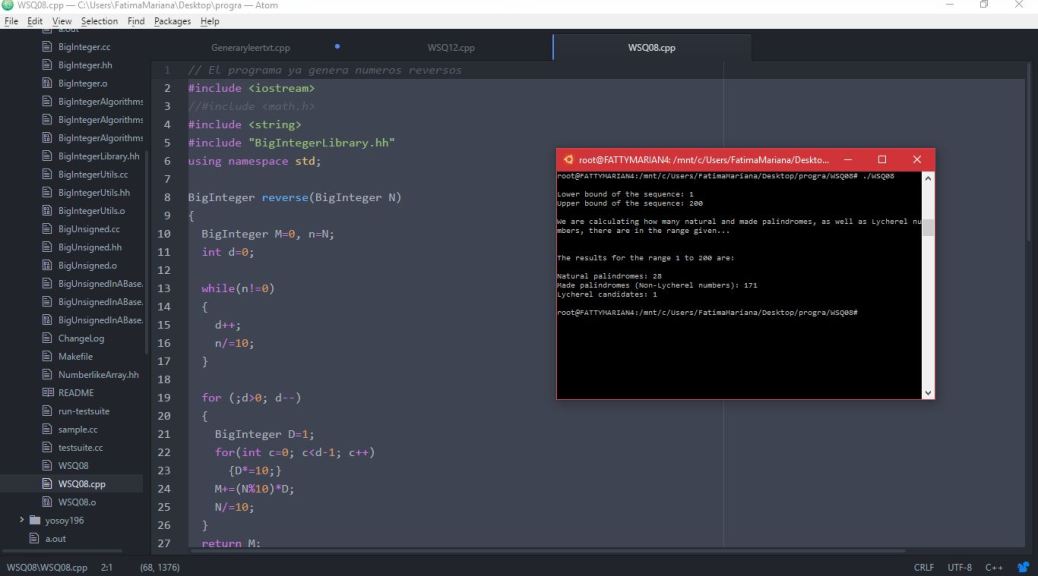We are going to calculate the quantity of Lychrel numbers (natural numbers that doesn’t convert on palindromes after a serie of aditions, for example, 196 is a Lychrel number), natural and made palindromes that are present in a range of integer numbers given by the user.
If we want to convert a non-natural palindrome to a palindrome we have to sum its reverse until we obtain the palindrome.
Using this logic, we can declare some variables that acumulate the reverse and suspect numbers, and evaluate a significant number of times until either do we find the palindrome or do we determine that the given number is Lychrel.
To make all this process I utilized some while loops where I flip the numer and then compare the resulting number with the original one.
You can see my code here…
// El programa usa Big Integer para almacenar más datos. Esta es una librería creada por el maestro.
#include <iostream>
//#include <math.h>
#include <string>
#include "BigIntegerLibrary.hh"
using namespace std;
BigInteger reverse(BigInteger N)
{
BigInteger M=0, n=N;
int d=0;
while(n!=0)
{
d++;
n/=10;
}
for (;d>0; d--)
{
BigInteger D=1;
for(int c=0; c<d-1; c++)
{D*=10;}
M+=(N%10)*D;
N/=10;
}
return M;
}
int main()
{
BigInteger n, N, NatPal=0, MadePal=0, Lych=0, m, l;
string s, S;
cout << "\nLower bound of the sequence: ";
cin >> s;
cout << "Upper bound of the sequence: ";
cin >> S;
n = stringToBigInteger(s);
l = n;
N = stringToBigInteger(S);
for (; n<=N ; n++)
{
BigInteger c=0;
m=n;
if (n == reverse(n))
{NatPal++;}
else
{
do {
m+=reverse(m);
c++;
} while(m!=reverse(m) && c!=30);
if (c==30)
{Lych++;}
else
{MadePal++;}
}
}
cout << "\nWe are calculating how many natural and made palindromes, as well as Lycherel numbers, there are in the range given...\n\n"<< endl;
cout << "The results for the range "<< l << " to " << N << " are:\n"<< endl;
cout << "Natural palindromes: " << NatPal << endl;
cout << "Made palindromes (Non-Lycherel numbers): " << MadePal << endl;
cout << "Lycherel candidates: " << Lych << "\n\n";
return 0;
}



